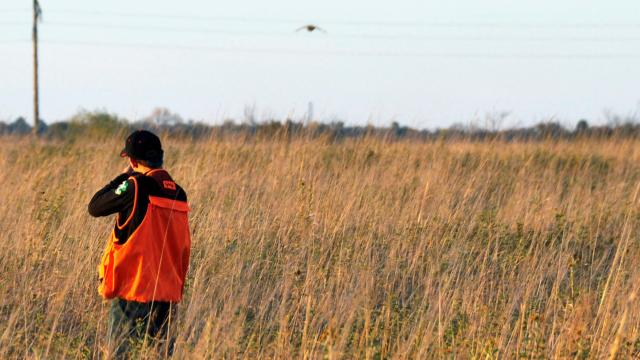Pipelines were made for transporting oil. But some, it appears, were made for leaking. The Keystone Pipeline System is one of those.
The system runs more than 4,184 kilometres from Canada and into Nebraska where it splits. And on Wednesday, it began to spill an unknown quantity of crude oil near a wetland in the vicinity of Edinburg, North Dakota. The spill comes almost exactly two years after leak from the same system.
The North Dakota Department of Environmental Quality reported that the spill stretches 457 metres long and 4.5 metres wide. The department has not yet responded to Gizmodo’s request for comment on a clean-up for timeline, as well as any potential impacts to wildlife or natural resources. However, oil in a wetland? That’s never good news.
The wetlands in the region”also known as prairie potholes”provide critical habitat to migratory waterbirds such as Canada geese, upland sandpipers, and the American bittern. The birds of this region are already under threat thanks to climate change as it reduces the number of local wetlands. Now, the very substance that’s driving the climate crisis may put these birds further at risk by degrading their home. And of course any animal is vulnerable to the toxins in crude oil.
The company responsible for this mess, TC Energy”formerly known as TransCanada”has said in a statement it’s contained the spill and setting up the necessary systems to monitor impacts to air, water quality, and wildlife. The cause remains unknown, but federal investigators found that the last spill on this pipeline system was due to a crack that originated during the pipeline’s construction, according to a 2018 report from National Transportation Safety Board. That spill dumped more than 1,540 kilolitres of oil.
We are responding to a crude oil release on the Keystone Pipeline System near our facilities near Edinburg, North Dakota. Please visit https://t.co/K2NppMFl0K for the latest updates. pic.twitter.com/l0M3i2oNzz
— TC Energy (@TCEnergy) October 31, 2019
We’ll have to wait to see what the investigators uncover in terms of the extent and cause of the new leak, but this incident further erodes public trust in the company’s ability to build infrastructure that can safely transport fossil fuels. Building that infrastructure also increases our reliance on fossil fuels that are driving the climate crisis, which makes it unsafe period. Spills are a major risk with any of these projects, and they’re not easy to clean up as oil can sink deeper and deeper into soils, eventually reaching groundwater. Just because you can’t see the oil anymore doesn’t mean it’s not still in the environment.
Yet despite the recent spills, TC Energy is trying to expand this pipeline system with a new pipeline: the notorious Keystone XL. The proposed 1,905 kilometre-long pipeline would transport up to 830,000 barrels of crude oil between Canada and the U.S.
The only reason TC Energy has a shot at building it is because of Donald Trump, who forced through approval of the project after former President Barack Obama killed it.
Many community members, landowners, tribal nations, and environmentalists are unhappy and have sued to stop it. This latest environmental disaster is the perfect example of what they fear. Gizmodo reached out to TC Energy for comment and will update if we hear back.
